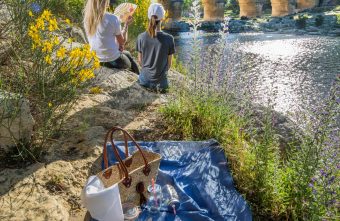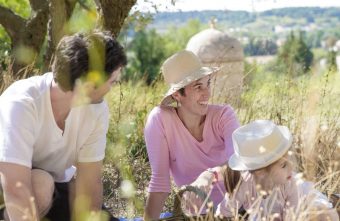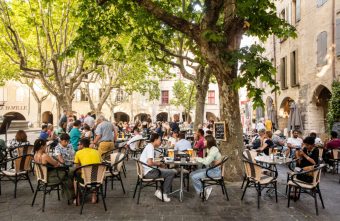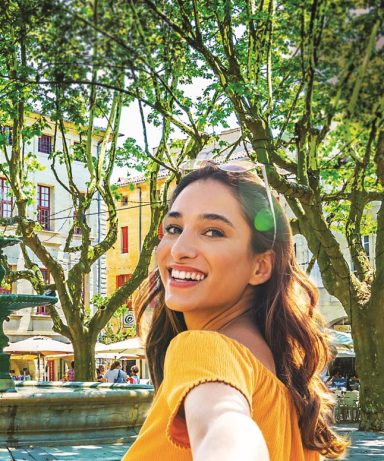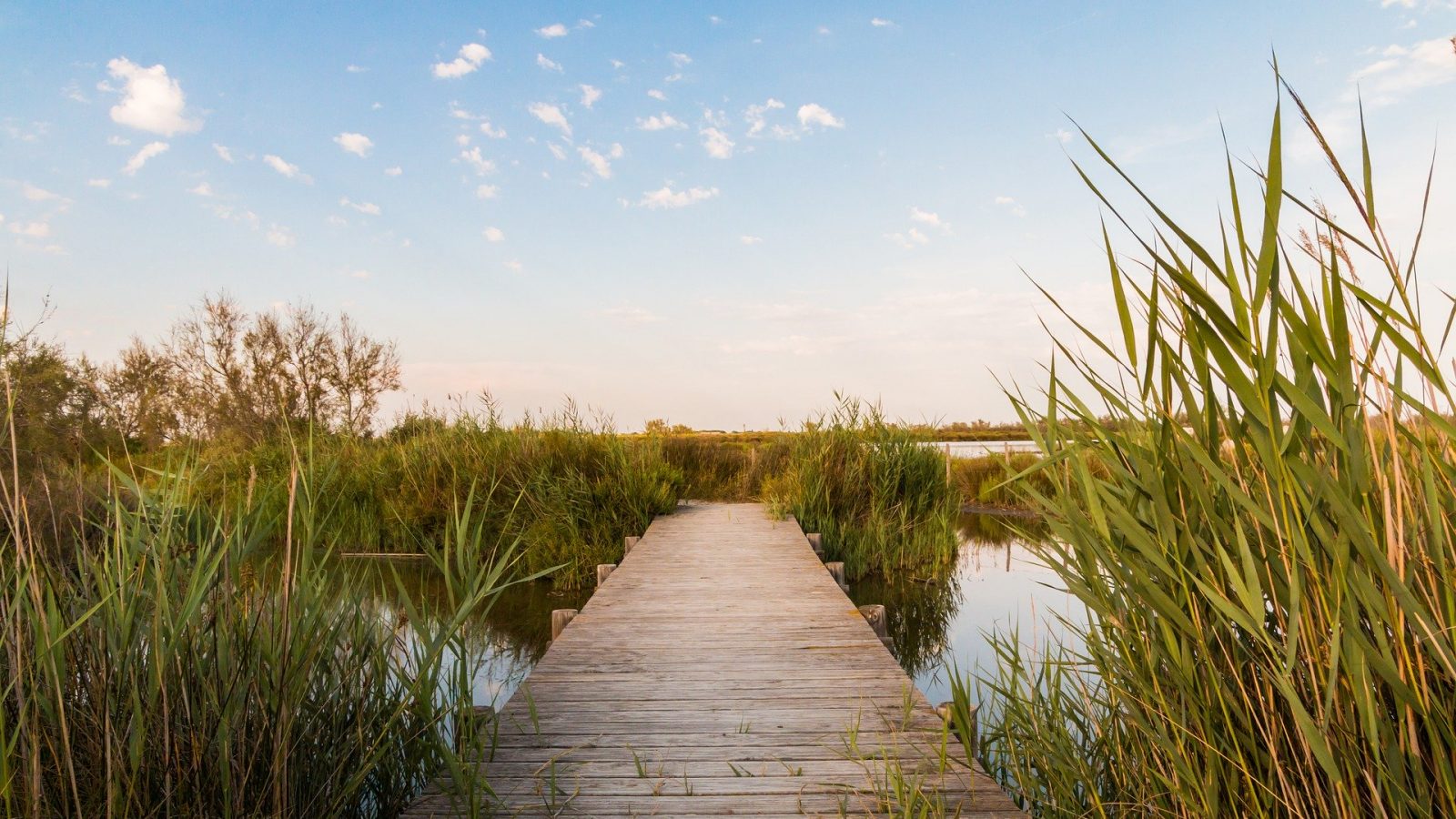Camargue is a wild and magical place, just one hour from Uzès. This unique and untouched natural environment on the shores of the Mediterranean is a welcome change of scenery. There’s so much to do while you’re exploring Camargue: bird watching, horse riding, bull traditions, tour of the salt marshes and so much more. Read on to find out about this vast natural environment!
Discover an exceptional and protected land
Camargue is a vast area of wetlands between the Mediterranean and the Rhône delta, shaped over the years by the river, the sea, the wind and the sun. The balance of this area is extremely fragile and it is important that human activity goes hand-in-hand with the protection of the environment. The Parc Naturel Régional de Camargue was created to ensure the sustainable development of the area. Many of these natural spaces are protected by an official status: they are classified Natura 2000, Biosphere Reserve, Marine Reserve, etc.
While exploring Camargue, you’ll realise that a large majority of the area has in fact been shaped by Man. This natural region is the ideal place for salt and rice production, as well as for fishing and farming.
The best way to explore the area is along the trails either on foot, by bicycle or on horseback. You’ll appreciate the peace-and-quiet of this natural environment and the special atmosphere that you can only find in Camargue.
Observe the wealth of camargue wildlife
Take advantage of your escapade into nature to observe the local wildlife of the Camargue region. When we think of Camargue, we think of the wild horses and bulls of Camargue. But there are also so many other species living in this vast natural environment.
A good example is the birds here. The Camargue region is on the migratory route between Northern Europe and Africa, making it an ideal stopover. Some areas here have been developed especially for bird watching: keep your eyes peeled, you might just catch a glimpse of some of them!
The iconic bird of Camargue is without a doubt, the pink flamingo. Did you know that Camargue is the only place in France where they come to nest? Pink flamingoes can be seen in this region all year round.
And it’s not only birds that you can see here: several species of turtles and coypus have also chosen to settle here.
Go horse riding in Camargue
We can’t tell you about Camargue without talking about this ancient breed! The Camargue horse is a small, white horse and is certainly the best way to explore the region. Fans of horse riding, come and mount your horses! Come on a horse ride to admire the views and the superb beaches of Camargue.
If you’re not a fan of horse riding, you can still observe the horses from afar on an organised excursion. In Petite Camargue, there is a wide range of safaris and excursions on offer. Accompanied by a guide, you can uncover all the secrets of this mysterious place and observe the many animal species that reside here, in a fun way.
Experience the traditions of camargue
Camargue is also a land of traditions! The identity of this natural region has been largely influenced by bull and horse breeding, and the farms are known as “manades”. The “manades” are run by the “gardians” and they are behind the many activities on offer here such as typical “Courses Camarguaises”, “ferrades”, bull shows, “abrivados”, etc. While you’re staying in Camargue, don’t hesitate to attend one of these demonstrations or taste the local specialities at an authentic Camargue-style evening.

Camargue is a festive destination so make sure you come to one of the many festivals, “ferias” and events that bring the area to life. On the programme, you can expect flamenco dancing, guitars and traditional costumes!
Visit the towns and villages of Camargue
You can also learn about the heritage of Camargue by exploring the towns and villages here. They are mostly fishing villages and each one has its own special characteristics: the white houses in Les Saintes-Maries-de-la-Mer, the fishing port in Le Grau-du-Roi, the medieval walls in Aigues-Mortes, the Tower in Port-Saint-Louis-du-Rhône, the salt marshes in Salin-de-Giraud, the abbey church in Saint-Gilles, listed as a World Heritage Site by Unesco, and so much more. Not-to-mention Arles, the town that is considered as the capital of Camargue and known for its Roman influence. The choice is yours!
 Ticketing
Ticketing  Pass
Pass
 Gift box
Gift box  Groups & business
Groups & business 